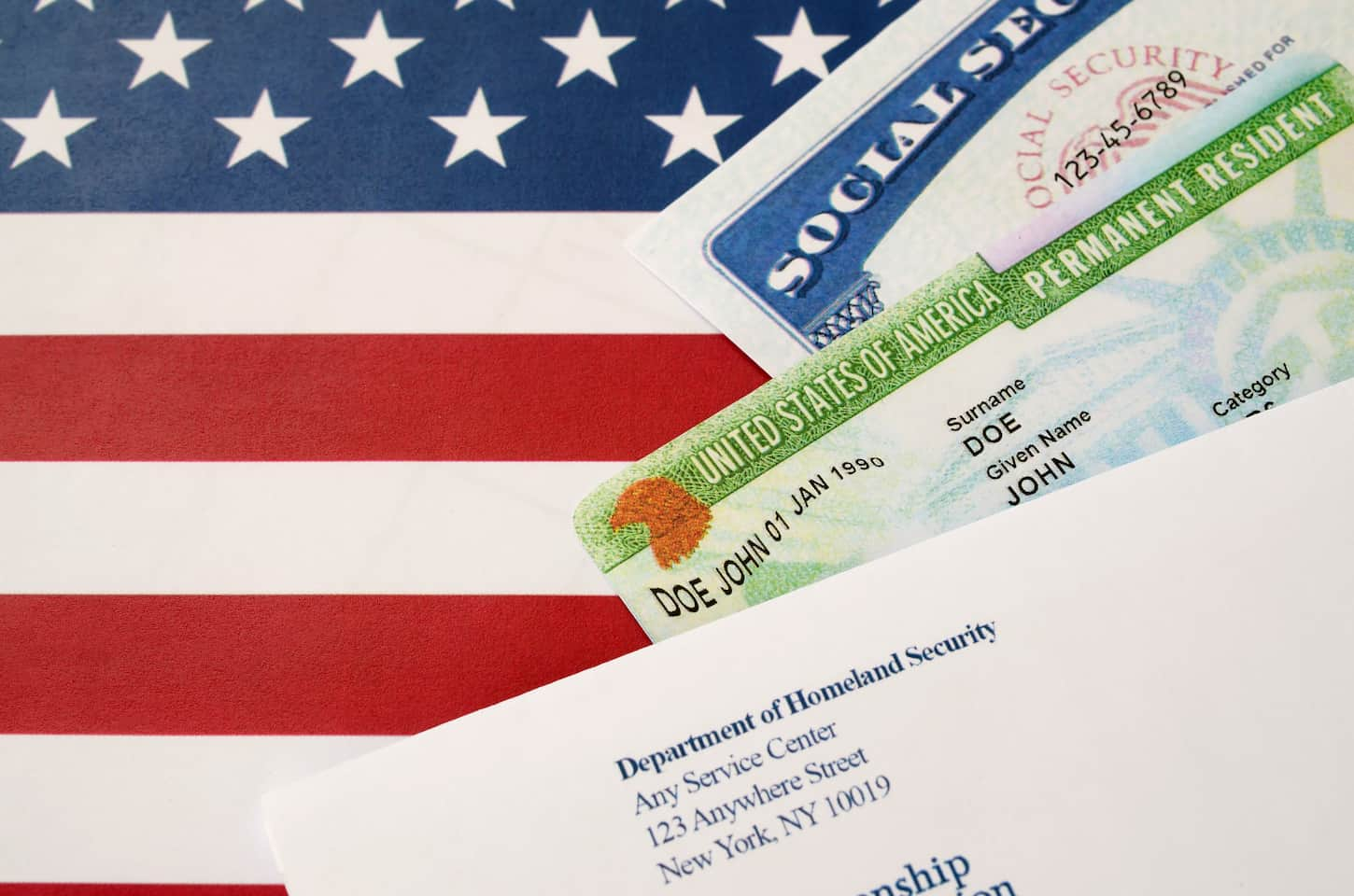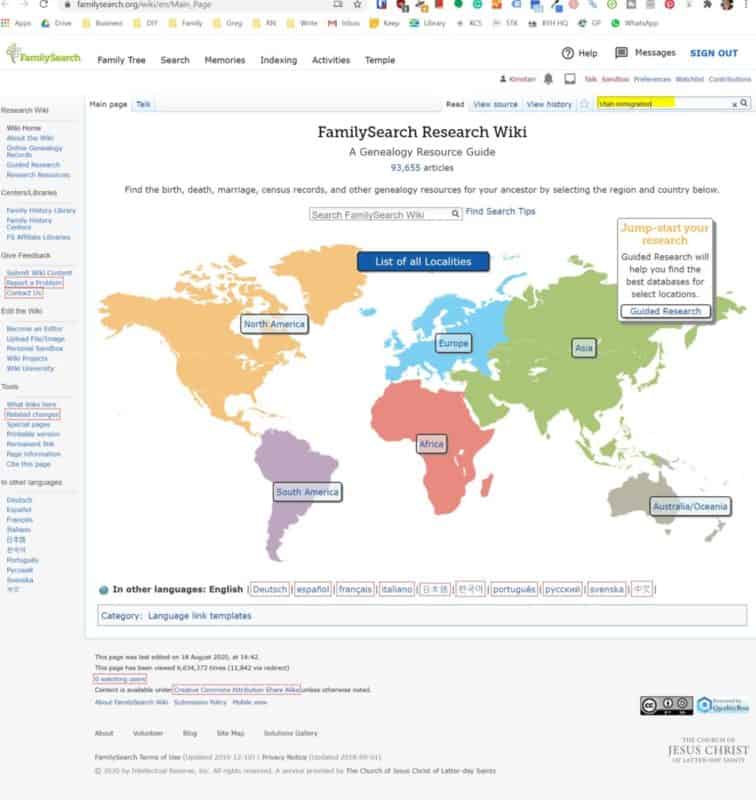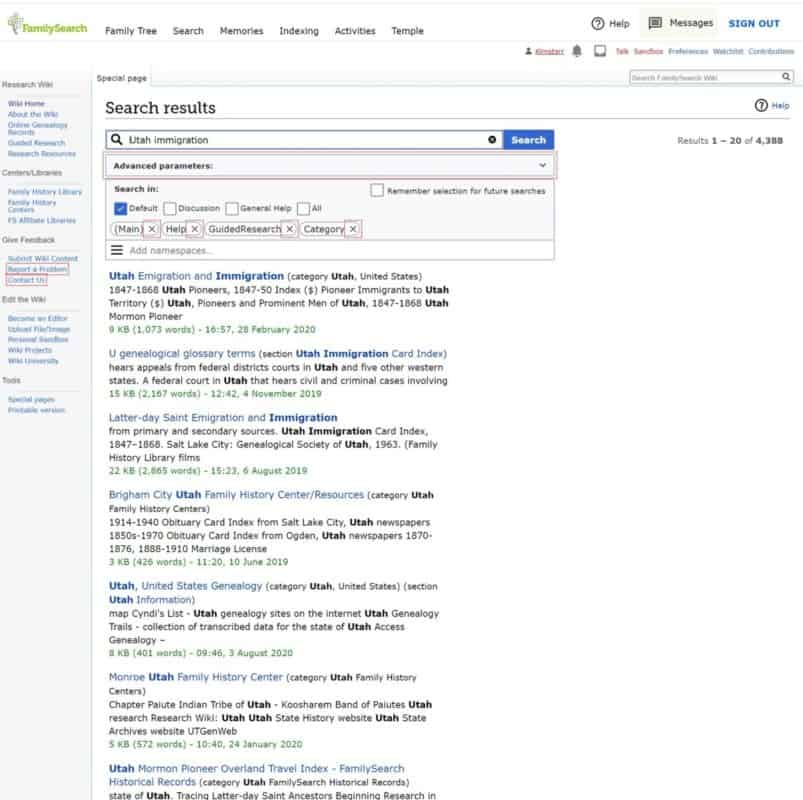America is a land of opportunity and immigrants. So when you’re trying to find out more about your family, it can help to discover when your family became a US citizen. So, when did my grandfather become a US citizen?
To find out when a grandfather (or another relative) became a citizen of the United States, start by finding a time frame. A living relative may know that information. Then, search for naturalization records from that time frame. If no known timeline exists, find it using a recent census.
Ready to find granddad’s citizenship records? Let’s dig into how to do just that – step by step!

How to Find When your Grandfather Became a US Citizen
In order to find the right records, we need to first know when granddad earned his citizenship. Or if it’s not your grandfather, that’s fine. This information will be valid for any other relative.
1. Find the (Approximate) Timeline
Here are a few ways you might be able to narrow down the timeline of when citizenship happened.
Ask Granddad. Look, if granddad is alive and has no memory issues, let’s skip all of the extra steps. Just ask him – and save yourself all the rest of this (totally unnecessary) genealogy work. Just make sure you write it down in your genealogy software or in a book of remembrance for later.
Ask other living relatives. If granddad isn’t alive or can’t answer, see who else might know that information. Grandma, aunts, uncles, or your parents may know. Or if they don’t know the exact date, they may at least remember the year. Worst case scenario, you have a range of years to sort through. That’s still much better than having to search through decades of records!
Ask relatives for a timeline, or do some deductive reasoning to find your time period. Look at your grandfather’s age when he came to the US. Look at when and where his children were born. Use that information to narrow down granddad’s immigration and naturalization dates.
Breanne Ballard
Check census records for a timeline. If nobody living can give you a clue on the timeline (or by “granddad” you really meant “great-great-granddad”), then it’s time to dip into the appropriate census records. Census records can give you a lot of amazing data – if you can find the person you’re looking for. Thankfully, indexing has made old census records easier to access than ever before.
Even if you have a solid idea of granddad’s timeline, use the census records to verify that you’re on the right track.
Search immigration records to find the timeline. If you know when your granddad immigrated to the United States, or granddad’s not in the census, then immigration records may be a better bet. We’ll talk about various ways to search immigration records later in this article. Just know they may be helpful.
For example, while my granddad was born in the USA, I know that his father emigrated from Sweden as a teenager. Given that he was born in the 1870s, though, that gives me a huge time frame – anywhere from 1885 to his death in 1934.
2. Determine Which Naturalization Records to Search
Now that you know (approximately) when Granddad was naturalized and became a US citizen, let’s look at the records. First, we need to know where to look.
Before 1906, naturalization was a local process. So if granddad became a US citizen before 1906, then you’ll want to look for those records at the state level. After 1906, naturalization became a more regulated and nationwide kind of thing, although the records are still kept at the local level.
However, thanks to the wonders of the internet, we don’t have to go search a ton of individual websites. Most of the big-name genealogical databases have access to varying degrees of naturalization records.
So I did a search in Ancestry.com’s Immigration and Emigration records – and found my great-grandfather’s declaration of intention to become a US citizen in 1904.
3. Find and Record Granddad’s Citizenship Records
Now that you’ve got the timeline (and maybe even a declaration of intention), it’s time to find granddad’s citizenship records.
Remember that before 1906, there wasn’t any federal uniformity to the forms or paperwork filled out. So while most of these forms have been indexed and made searchable online, you still may have to sort through several (dozen) to find the right person.
Finding my great-grandfather’s citizenship paperwork has proved… interesting. As of writing this article, I’m still looking for it. I’ve also learned a very valuable lesson: Charles was a very popular Swedish name.
If your granddad’s citizenship happened after 1906, though, then you’re in luck. Because in 1906, the United States Citizenship and Immigration Services (USCIS) standardized all of the intake and forms. It should be easier for you to find granddad.
4. Note Your Citations
Now that you’ve found your granddad’s emigration, immigration, naturalization, declaration of intent, and/or citizenship papers, please note your citations!
Here are a few ways to do that.
- Download the images and save them to your computer. Change the random string of letters in the file name to note where you found the image and what it is.
- Upload the image to your genealogical software of choice. The software should prompt you for relevant information like what it is, where you found it, and other data. Put it in.
- Save the URL of the image – and add that to the citation.
- Learn the proper way to cite genealogical research and do that.
Now, if you don’t know the proper way to cite genealogical data yet, don’t feel bad. I don’t know it, either. But I assume there is one because genealogists are historians – and historians have all sorts of cool methods for citations. But while we’re both learning, let’s both at least write down enough information that we could quickly re-find anything we’ve found so far. Deal? Awesome.
Citizenship in the USA: History and Requirements
Okay – in order to facilitate the finding of citizenship paperwork, let’s go through a brief history of how citizenship and naturalization requirements work.
First, a quick distinction between naturalization and citizenship.
- Citizenship is automatically given to those who qualify for it. For example, if you’re born in the US, you’re a natural-born citizen. Or if your parents are citizens and you’re qualified to be one, too, then you could be awarded a citizenship certificate.
- Naturalization is a process for non-citizens to become citizens, via the naturalization process. These citizens are awarded a certificate of naturalization.
So if your granddad was born in another country and moved to the USA alone, then he went through a naturalization process towards citizenship. His children (your parent and any aunts or uncles) born in the US would then be natural-born citizens. Then, if the granddad went back home to visit and a child was born while visiting, that child could be eligible for a citizenship certificate.
Got it? Great. Let’s get back to the history of it, then.
Before 1906, there wasn’t any federal uniformity to the forms or process. It was a local, court-based decision. Forms were all over the place. Some only asked for names. Others asked for more information. So it’s very possible to see the right name – and for you to be looking at the wrong person’s paperwork.
For example, the declaration of intention (which is part of the naturalization process) that I found for my great-grandfather is dated 1904. The information listed is the first and last name and the date. Given that my great-grandfather had a more common Swedish name than I’d previously realized, Charles’s paperwork may be wrong. And if it is, I’m going to have to re-frame my time frame in order to find the right naturalization paperwork (that I’m still looking for!). So the key step here is that I need to check the census records to verify my timeline.
Since 1906, however, the USCIS (the United States Citizenship and Immigration Services) has standardized everything. Especially the forms and paperwork. To see the current naturalization process, make sure you read USCIS’s 10-step process to naturalization at their website. Click here to go there now in a new window.
But if you don’t feel like reading a government website, here’s the basic process, along with some notes about how it used to be (to help you find granddad’s paperwork).
- An immigrant waits for a predetermined amount of time to prove residency (in the past, it has varied from 2 to 5 to 14 years). Until standardization happened in 1906, the actual steps varied from one area to another. For some areas, the declaration could be filed during residency, though then an applicant would have to wait until the full amount of required time passed before it could proceed from there.
- After the residency requirement has passed, an immigrant can file a declaration of intent (often called “first papers”), which can be used to file a Petition for Naturalization.
- Once the petition is granted, an immigrant is granted a certificate of naturalization (sometimes called “second” or “final papers”) and naturalization.
So if you find one record, don’t forget to find the others – because there are immigration forms like certificates of arrival and alien registrations, too. They aren’t as important as the two big ones (the intent and the certificate of naturalization), but they’re still cool to find and cite.
Oh, and here’s a fun plot twist: just because your ancestor started the naturalization process doesn’t mean they finished it. So if you can’t find all of the documentation, don’t despair. Keep looking, but keep in mind that they may not have finished the process.
One more plot twist: while we’ve come a long way since the citizenship requirements in the 1790s were listed as being “free whites of good moral character”, there have been stains on our history where the USA enacted dubious laws, put various bans, or even gave quotas on immigration for different groups of people.
So while you may be able to find your granddad’s citizenship path, finding an older ancestor’s citizenship path may prove harder, if not impossible. It’s not a reflection on your family or your ancestor – it’s merely a very sad historical fact.
What Immigration and Naturalization Information Can I Find in a Census Record?
Okay – so we promised you we’d talk about the various pieces of immigration and naturalization information you can find via the census records.
Census records have, over the decades, collected some amazing information. The data does vary from decade to decade, but they usually at least give you the birthplace of parents and children.
The census records of 1900-1930 are especially helpful, as they give us information on birthplace, immigration status and timeline, how long the participant has lived in the USA, and when they were naturalized.
So getting back to the example of my great-grandfather, what I really need to do is find Charles in both the 1900 and 1910 census records. Then, I’ll have the information I need to find his citizenship records. And it’ll let me know if the declaration of intent I found is actually his – or if it belongs to some other Charles.
Also, take note of where your grandfather is living as reported in the various census records. This will help you find more records that we’ll get to later.
And – as always – note your citations. Save that information now so you don’t have to research things again later.
How Do I Find Immigration Records?
There are a few ways to find immigration records for your granddad (or anyone else).
Do a basic search on Ancestry.com or FamilySearch.org. Ancestry.com has an “Immigration and Travel” search function in the pull-down menu under search. It can give you a good starting place. Just keep in mind that it’s going to mean a good deal of wading through tons of information – it’s better to use this after you’ve narrowed things down within a time frame.
Keep in mind that when you do a search on either of these sites, you might not be seeing all the site has to offer.
- Some collections have not been indexed yet, so they are unsearchable.
- There isn’t a lot of great overlap automatically done between collections. Thus, you may have to browse ALL the collections in their catalog. For example, Breanne just recently got an Ancestry hint that a suggestion about her great-grandfather’s Declaration of Intent. However, she had actually found that a few years ago because she knew how to find unindexed records. So make sure you’re not relying totally on search – or you’ll be waiting several years for the indexing process.
Search the US Government’s available national archives. You can reach the archive’s immigration records via their website – just click here to go there in a new window now.
Head to the Genealogical Research Wiki page and search for the state where your grandfather lives (we told you that we’d need that information). Use the search query “(State) immigration” – but use the state where your grandfather lives. And don’t type in the parenthesis, either.
So for my great-grandfather, I’d type this into the search bar: Utah immigration – this will pull up a whole page of resources that will help you in your search.

Here is what the results look like for Utah immigration.

Check Ellis Island’s Records. Ellis Island was a popular, central hub for immigration. Due to old-fashioned handwriting, indexing errors, and all sorts of other problems, make sure you’re using all of your best searching techniques (like wildcard search operators) while you browse these records. Be sure to also click the “One Page Form” option so you can see all of the ways you can filter your search results easier. Click here to go search their website (in a new window) now.
Between all of the great clues you’ve gathered from your family, census records, and these new sources, you should be able to significantly narrow down your search – and then find the immigration records in question.
Keep in mind that while we have most immigration records, there are undoubtedly a few that have been lost to time, indexing errors, spelling errors, or a whole host of other problems.
How Do I Find Old Naturalization Records?
To find a specific naturalization record, start at FamilySearch.org or Ancestry.com.
- Ancestry.com’s US Naturalization Records Index spans from 1794-1995, though it does require a paid membership. You can search naturalization records from 1840-1957 with a generic registration. Click here to go search those now in a new window.
- FamilySearch.org’s Historical Records Collection will let you search by state for all indexed records related to naturalization and citizenship. FamilySearch.org is a free resource, though it does require registration. Click here to go search those records in a new window now.
- German Roots has an amazing list of resources (by state) for various in-person records and locations if you’d rather go that route. You can access that list in a new window by clicking here.
Oh, and don’t forget to go visit the card catalog on Ancestry.com. Do a search for “target state naturalization” (so for my great-granddad, I’d type in: Utah naturalization) to find another path to finding the records in question. You can open a new window to go search those records now by clicking here.
Final Thoughts
Finding your granddad’s citizenship records doesn’t have to be some mystical, unobtainable process. It can be doable – and it can be a whole lot easier than you think it will be.
While searching for my great-grandfather’s citizenship papers, I discovered a treasure trove of papers and documents that I didn’t know existed. I think my favorite one I’ve found was my granddad’s passport application – complete with a photograph of my granddad as a 20-year-old.
Sure, it was mislabeled under my great-grandfather’s name. But I’ve added those papers to my granddad’s information on FamilySearch.org – so that all of my family can see what a dapper young man he was.
So even though I’m still looking for my great-grandfather’s actual citizenship paperwork, it’s okay. I’ve got a clear path to finding it. And hopefully, this has helped you find a new path forward, too.
Happy hunting, fellow genealogy detectives.
Resources
When learning about genealogy, it’s important to learn from various reputable sources. These are the sources used in this article and our research to be more informed as genealogists.
- Cohn, D’Vera. “How U.S. Immigration Laws and Rules Have Changed through History.” Pew Research Center, Pew Research Center, 30 May 2020, pewresearch.org/fact-tank/2015/09/30/how-u-s-immigration-laws-and-rules-have-changed-through-history/.
- “Immigrant Records at the National Archives.” National Archives and Records Administration, National Archives and Records Administration, 2020, archives.gov/research/immigration.
- Passenger Search – The Statue of Liberty & Ellis Island, 2020, heritage.statueofliberty.org/passenger.
- United States Naturalization and Citizenship. 7 Apr. 2020, familysearch.org/wiki/en/United_States_Naturalization_and_Citizenship.
